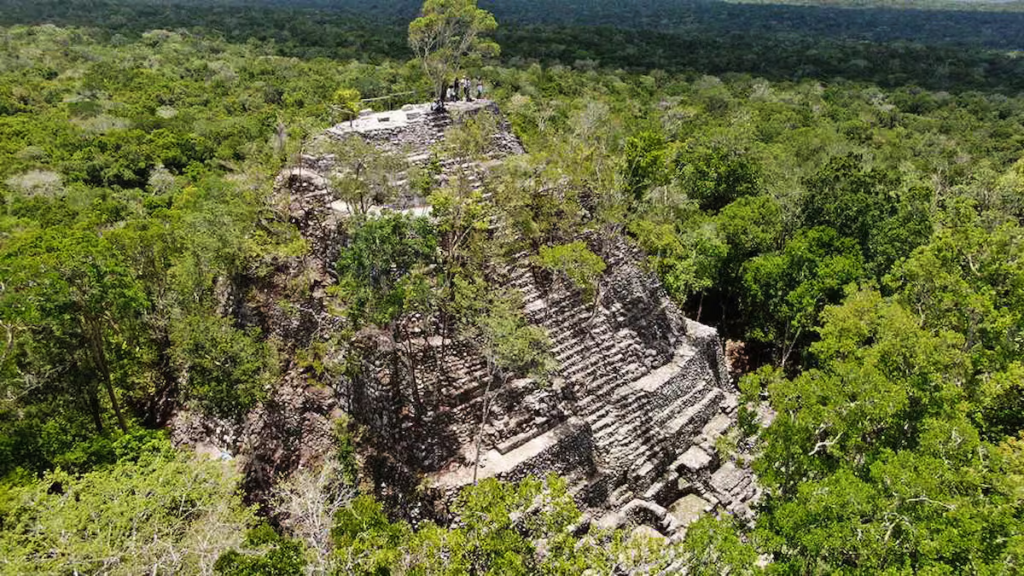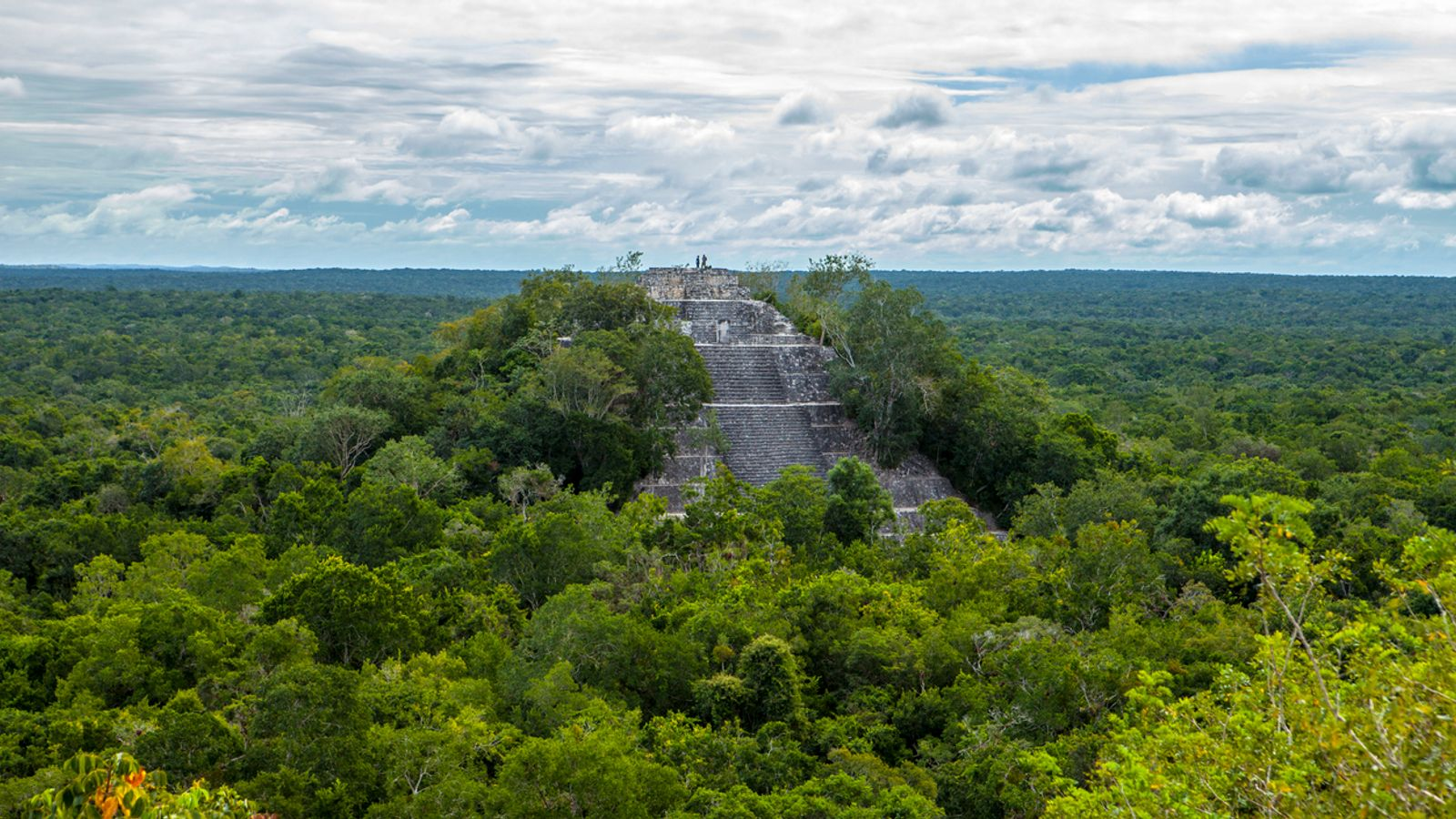A remarkable discovery has unveiled a previously unknown Mayan city hidden deep within the jungles of Mexico. Named Valeriana, this ancient urban center reveals much about Mayan civilization and settlement patterns, offering new insights into the density and scale of ancient cities.
Utilizing state-of-the-art technology, archaeologists have uncovered the mysteries of Valeriana, an unexpected glimpse into one of history’s most fascinating civilizations.
Rediscovering the Past: The Accidental Find of Valeriana
Discovery in the remote Campeche region of Mexico has come as a surprise to both archaeologists and historians. This dense and sprawling city was revealed by Lidar (Light Detection and Ranging) technology, an innovative method that uses laser beams to penetrate dense forest canopies and map the landscape below.
This breakthrough technology, pivotal in archaeology, has allowed researchers to map entire landscapes that were previously inaccessible due to thick jungle growth.
Read : Foxconn Building World’s Largest Nvidia Superchip Plant in Mexico
The discovery was part of an expansive project called Alianza, initially intended for forest monitoring. Airborne Lidar data, covering roughly 122 square kilometers, captured detailed imagery of the region, leading to the realization that hidden within the jungle was a previously unknown Mayan city.
The density and complexity of Valeriana provide a window into the urban infrastructure and organization that characterized the Maya civilization, challenging existing perspectives on ancient Mayan urban planning.
Read : Watch Video of Wildfire That Forced the Evacuation of an Entire Town of Ruidoso in New Mexico
This surprise discovery calls into question previous beliefs about Mayan settlement density, suggesting that ancient urban centers were more widespread and complex than initially assumed. While modern researchers have long been aware of major Mayan sites, such as Tikal in Guatemala and Calakmul in Mexico, the identification of Valeriana introduces the possibility that the jungle still holds many other lost cities, awaiting discovery.
The Grandeur of Valeriana: Architecture and Infrastructure
Valeriana stands as an example of the Mayan civilization’s architectural prowess and sophisticated urban planning. The city includes grand temples, palaces, and plazas, underscoring the advanced engineering skills of the ancient Maya. Researchers believe that Valeriana’s architectural layout reflects both the social structure and the cultural values of the Maya people.
Agricultural infrastructure also plays a significant role in Valeriana, revealing the city’s relationship with its surrounding environment. The ancient Maya relied on a highly developed agricultural system to sustain large urban populations, and Valeriana’s layout suggests an intricate network of irrigation channels, terraces, and reservoirs.
This advanced agricultural system not only provided sustenance but also served as a testament to the Mayan understanding of their natural surroundings and their ability to manipulate it for urban development.
In addition to showcasing architectural and agricultural ingenuity, the discovery of Valeriana contributes to a greater understanding of the Maya’s cosmology and religious practices.

The alignment of structures and the orientation of ceremonial centers point to complex belief systems, particularly the Maya’s sophisticated knowledge of astronomy. Many structures within Valeriana are believed to have been aligned with celestial events, indicating the city’s dual role as a place of worship and learning.
Significance of the Find: New Insights into Mayan Civilization
The Maya civilization, flourishing from 250 to 900 AD, left a profound impact on Mesoamerica, extending over present-day Mexico, Belize, Guatemala, El Salvador, and Honduras. The discovery of Valeriana offers an invaluable addition to the known history of the Maya and a deeper look into their way of life, social structure, and urbanization practices.
One of the most significant aspects of the discovery is the insight it provides into settlement density. Previous research focused on a few prominent sites, leading to assumptions that Mayan urbanization was relatively sparse.
Valeriana’s discovery, however, reveals a city comparable in density to other major sites, suggesting that densely populated areas were more common than previously believed. This finding reshapes our understanding of Mayan urbanism, suggesting that the Maya were capable of sustaining large populations across multiple urban centers, interconnected by trade, culture, and politics.
Valeriana’s layout and infrastructure further highlight the complexity of Mayan social organization. The city’s architecture points to a hierarchical society, where elite residences and temples occupy central areas while more modest dwellings are situated on the periphery. This spatial arrangement reflects the social stratification within the Maya civilization and offers insight into the distribution of resources, labor, and power.
The discovery of Valeriana represents a milestone in Mayan archaeology, unveiling a city that, despite centuries of obscurity, has preserved evidence of an ancient civilization’s ingenuity and resilience.
The advanced urban and agricultural planning found in Valeriana adds depth to our understanding of the Maya, shedding light on their ability to build thriving cities within challenging landscapes. As Lidar technology continues to evolve, it promises further revelations from the dense jungles of Mesoamerica, hinting at even more hidden marvels awaiting discovery in the ancient Maya world.

